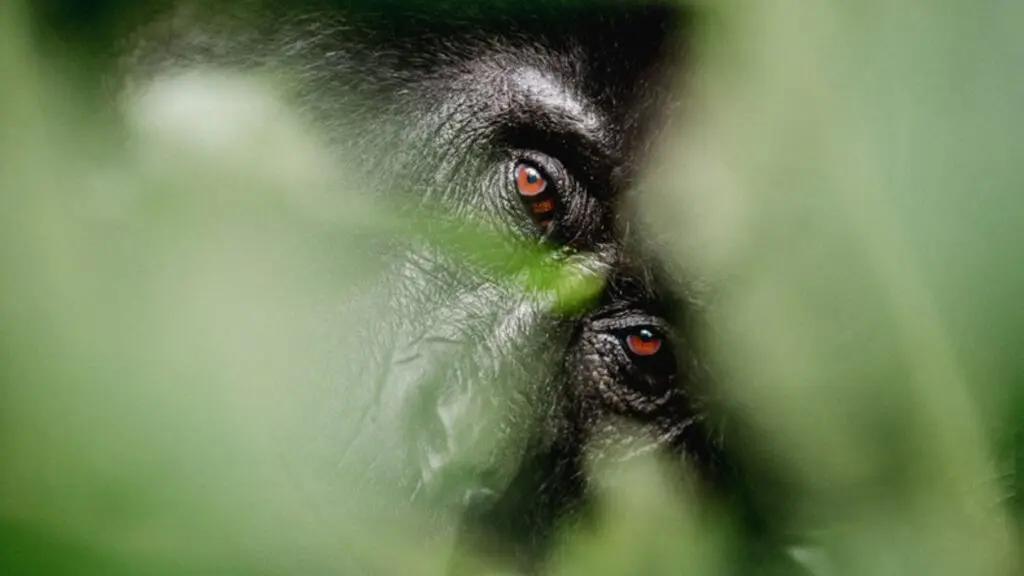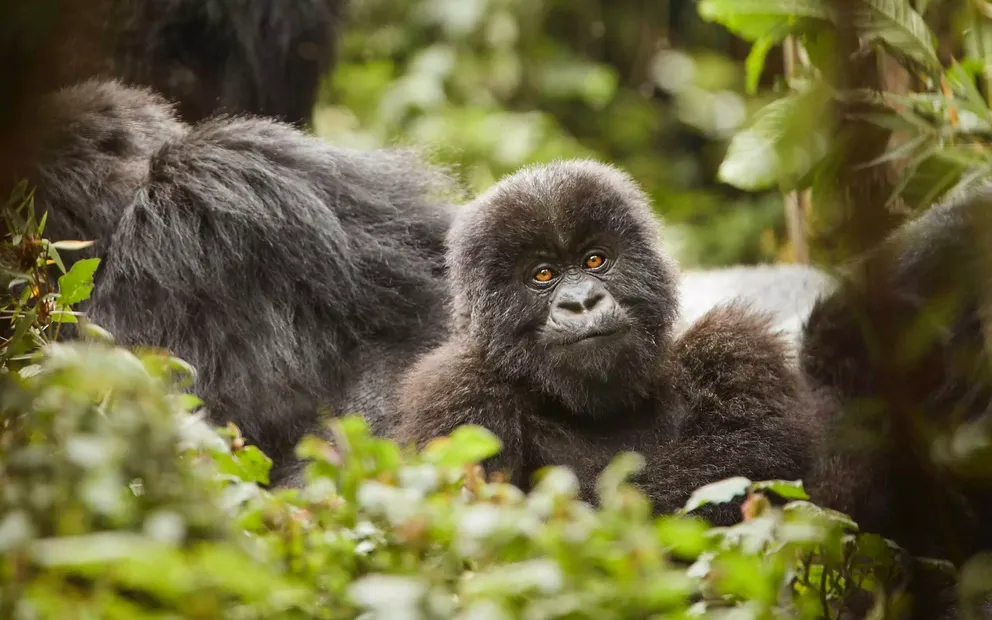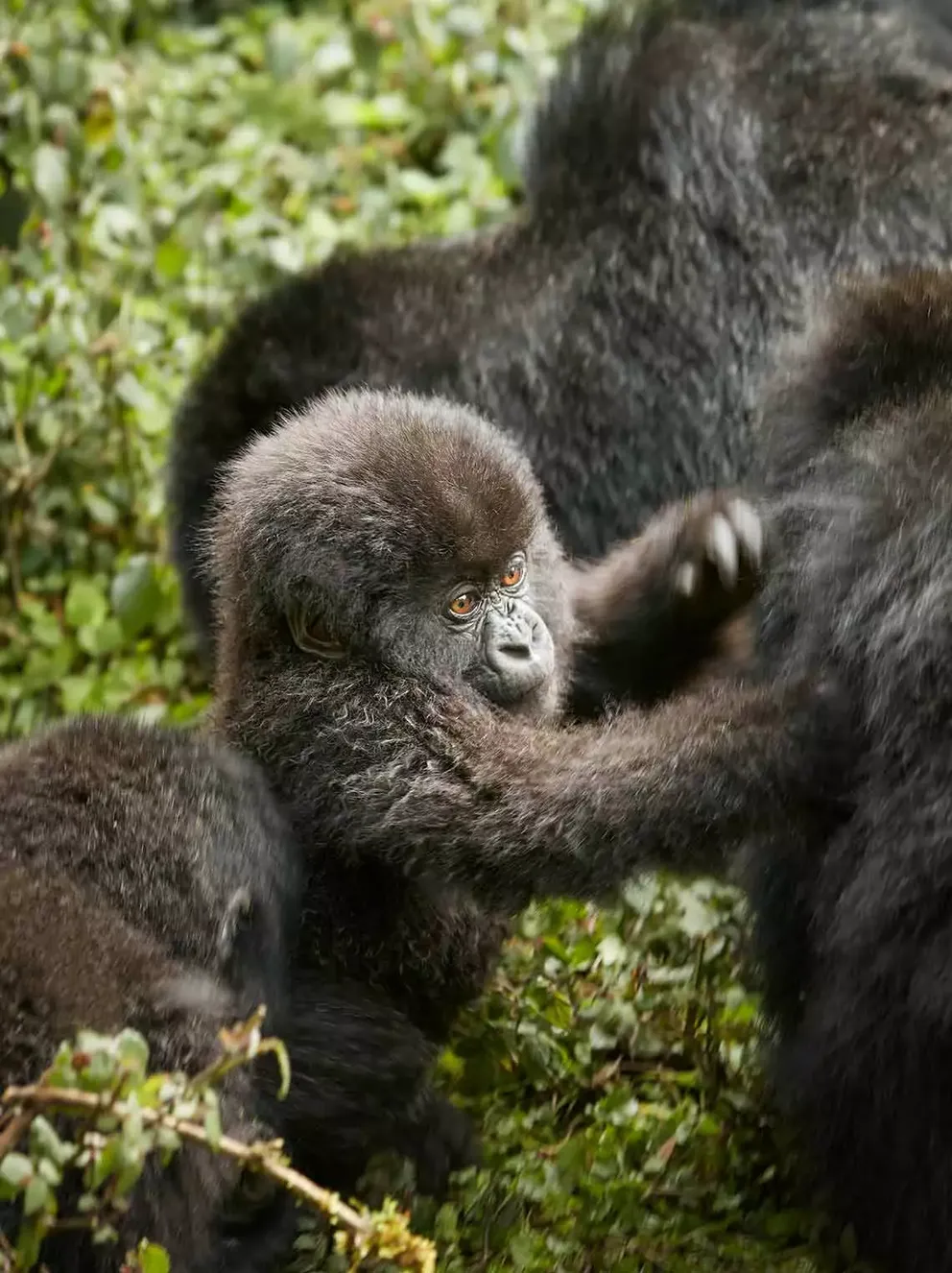- CONTACT US
- info@oruganosafaris.com
- +256-701-230-309
Gorilla trekking in a dense rainforest jungle is one of the best things to do in Africa. Encountering a 200-kilogram (440lb) male silverback gorilla up close can be a hair-rising experience, especially if you have only ever seen large wild animals from the safety of a car. Wild gorillas are found in just a few African countries, primarily Uganda, Rwanda, and the Democratic Republic of Congo. Among these, Uganda and Rwanda are the best destinations for gorilla trekking. This guide will compare these two countries based on key factors such as permit availability, costs, landscapes, trekking difficulty, and other attractions they offer. By the end, you’ll have a clear understanding of which destination best fits your travel plans.

As one of the ultimate wildlife experiences in Africa, gorilla trekking is becoming more and more popular. Luckily strict regulations are in place to protect these gentle giants, and the number of permits available per day is limited. A maximum of eight visitors can spend up to one hour with any given gorilla family on any given day. In Rwanda, there are 12 gorilla families available for trekking, all located in Volcanoes National Park.
Due to the limited number of families, permits can be in high demand, especially during peak seasons. In Uganda, the situation is different, with more gorilla families. There are 25 trackable families in Bwindi Impenetrable National Park and one in Mgahinga Gorilla Park. The larger number of families in Uganda means more permits are available, giving trekkers more flexibility in planning their trips.

When comparing the costs of gorilla trekking in Uganda and Rwanda, permit prices play a big role. In Uganda, a trekking permit costs $800 per person, making it a more budget-friendly option. In Rwanda, the permit is $1,500 per person, offering a more luxurious experience. Rwanda’s higher price is often seen as justified due to its huge investment in conservation and local community projects. Accommodation costs also differ: Rwanda has more high-end options, while Uganda offers a wider variety of mid-range options.
Transportation in Rwanda tends to be cheaper because of its proximity to Kigali, making transfers faster and more affordable. On the other hand, Uganda’s longer distances can lead to higher travel costs and more time on the road. In the end, Rwanda’s Volcanoes National Park is easier to access, making it perfect for travelers with limited time. Uganda’s Bwindi Impenetrable Forest provides a more authentic, adventurous experience with extra sights to explore. No matter which country you choose, both Uganda and Rwanda are top destinations for gorilla trekking.
Gorillas aren’t always so placid in the presence of people: it takes time and effort to achieve this relaxed, almost nonchalant attitude in a process known as habituation. Once a gorilla family is fully habituated, visitors can take part in regular gorilla trekking, where you spend an hour with the gorillas, with a group of up to eight people. This experience is available in both Uganda and Rwanda.
However, Uganda offers something special – the Gorilla Habituation Experience in Bwindi. This lets you join the process of getting gorillas used to people by tracking a group of semi-habituated gorillas. It’s a unique adventure where you track the gorillas in a much smaller group of just four people, and you get to spend four hours with them. The cost is US$1,500, which is the same price as a one-hour gorilla viewing permit in Rwanda.
With fully grown male silverback gorillas weighing about 200 kilograms and standing 6 feet tall, it’s natural to feel a little nervous about gorilla trekking. But even though they seem intimidating, gorillas are peaceful, plant-eating animals that are safe to be around. Like any wildlife encounter, there are safety rules to follow, and your guide will explain them carefully. Both Uganda and Rwanda are considered safe places for tourists to go gorilla trekking. But Rwanda is slightly more organized and has better roads than Uganda.
Uganda’s Bwindi Impenetrable Forest offers a beautifully rugged and dense trekking experience, just like its name suggest. The ancient rainforest, with its steep hills and tangled undergrowth, offers a more authentic and adventurous jungle experience. The varying altitudes, ranging from 1,160 to 2,607m, create diverse ecosystems, making the trek feel like a deep journey into nature.
The lush, wet environment with towering trees, mosses, and ferns gives a sense of being in a wild, untamed place, although the thick vegetation can sometimes limit good visibility of the gorillas. On the other hand, Rwanda’s Volcanoes National Park offers a different trekking experience in the Virunga Mountains. The volcanic landscape, with open spaces, bamboo forests, and meadows, is easier to navigate than Bwindi. Trekking at higher altitudes (between 2,400 and 4,507 meters) often means clearer views of the gorillas because the vegetation is less dense.

The difficulty of gorilla trekking can vary in both Uganda and Rwanda. Generally, trekking conditions are a bit easier in Rwanda, but this isn’t always the case.
The conditions depend on where the gorillas are located, as each gorilla family has its own territory, and some are easier to reach than others. The trek can become more difficult after heavy rain, as the forest paths get slippery. This is especially true in Bwindi, which experiences a lot of rainfall year-round. In Rwanda, the trails are usually more defined, while in Uganda, they tend to be steeper and more overgrown. However, the higher altitude in Rwanda can be challenging for some people.
Overall, gorilla trekking in both countries is physically demanding. Since treks can last from one to seven hours across different terrains, it’s recommended to start training a few months before your gorilla safari trip to be well-prepared.
Gorilla trekking is typically recommended for children aged 15 and older. While both countries have similar age restrictions, Uganda is the only one that allows children under 15 to participate. In Uganda, children who are at least 13 years can go gorilla trekking with a signed consent letter from their parents, as approved by the Uganda Wildlife Authority.

Most people add a gorilla trek to a longer safari, and Uganda offers more options for this than Rwanda. Uganda has top safari destinations like Murchison Falls, Kidepo Valley, and Queen Elizabeth National Parks, where you can see classic safari animals like elephants, lions, buffalo, and giraffes.
All of the Big Five (lion, leopard, buffalo, elephant, and rhino) are found here, except rhinos, which can only be seen at Ziwa Rhino and Wildlife Ranch. Uganda is also famous for chimpanzee trekking, and Queen Elizabeth Park is known for its tree-climbing lions, a unique behavior that still puzzles scientists.
Uganda is a birdwatcher’s dream, with over 1,080 species, including the iconic Shoebill. It also has the towering snow-capped Rwenzori Mountains, also called the “Mountain of the Moon.” For more adventure, you can visit Jinja, where the world’s longest river begins its journey out of Africa’s largest lake, and try white-water rafting, tubing or kayaking on the rapids.
Rwanda, on the other hand, offers golden monkey trekking and visits to the Genocide Memorial in Kigali. Known as a birdwatcher’s paradise with over 700 bird species, Rwanda also has Akagera National Park, where you can see the Big Five and other wildlife in the park’s stunning savannahs and highlands.
The best time to go gorilla trekking in both Uganda and Rwanda is during the dry seasons, which are from June to September and December to February. In Rwanda, the short dry season from mid-December to early February is particularly great for trekking because the trails are solid, and there’s a lower risk of malaria, making it the perfect time for the adventure. Uganda, with its warm equatorial climate, is great to visit year-round. However, the gorilla forests in Bwindi and Mgahinga are always humid and rainy, so it’s important to pack waterproof gear, even during the drier months.
Both Uganda and Rwanda offer a range of accommodations to fit all types of travelers, from budget-friendly lodges to luxurious retreats. Uganda is especially known for its midrange options, including the Orugano Bwindi Gorilla Lodge. The country offers a wide variety of places to stay, from affordable to exclusive. Both Uganda and Rwanda provide incredible gorilla trekking experiences. Your choice will depend on different factors, but no matter which you choose, you’re sure to have an unforgettable encounter with these amazing animals.

Orugano Safaris has plenty of experience organizing gorilla trekking trips in both Uganda and Rwanda. If you’re thinking about going but haven’t decided which country to visit or have other questions, don’t worry – we’ve helped many travelers with the same concerns. We can offer expert advice on the best options for you and help you choose the perfect destination.
Bwindi Impenetrable Forest Nkuringo Sector- Uganda
+256-701-230-309
info@oruganosafaris.com